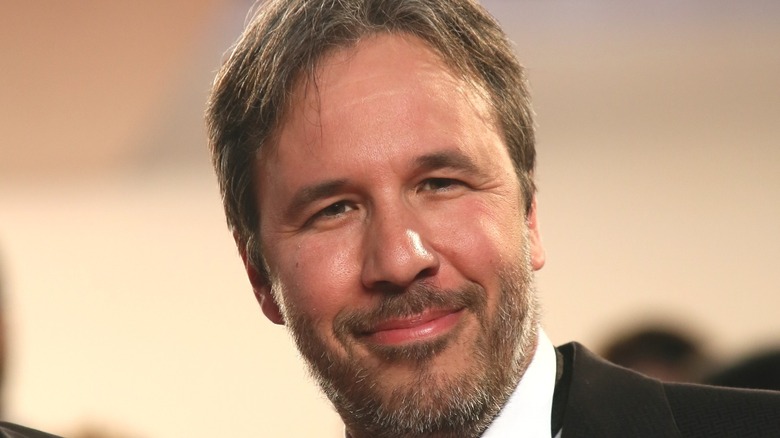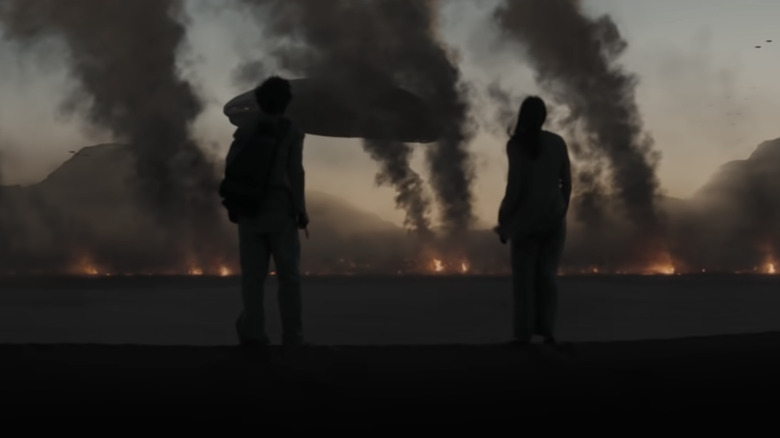Denis Villeneuve Shares A Surprising Obstacle To Dune's Production Design
One of the most highly-anticipated films of the year, "Dune: Part One," is almost here. The film is not only an adaption of one of the most famous sci-fi novels of all time but is also directed by Denis Villeneuve, the acclaimed filmmaker who has previously helmed films like 2016's "Arrival" and 2017's "Blade Runner: 2049." The upcoming sci-fi blockbuster received a seven-minute standing ovation at its Venice Film Festival premiere earlier this year (via Deadline), and now, it's set to debut in theaters and on HBO Max on October 22.
Set in the far future, the film follows Paul Atreides (Timothée Chalamet), the heir of House Atreides, as he and his family are forced to fight for control of the desert planet Arrakis. It's the only planet that produces the valuable substance known as "melange" or "spice," a drug that can extend human life and advance human thought and travel, and as a result, control of the planet is highly contested amongst the film's various noble families.
Now, ahead of its coming premiere, it's safe to say that every element of "Dune" promises to be awe-inspiring, from its central performances to its cinematography and, of course, production design. However, it turns out that the film's creative team faced a surprising obstacle while creating the production design for "Dune."
Denis Villeneuve wanted Dune to look exactly as it's described in the original novel
In an interview with GamesRadar, director Denis Villeneuve opened up about his approach to creating the look of "Dune," saying, "I said to the team at the beginning that we should inspire ourselves exclusively from the book. I wanted the movie to be as close as possible to the vision I had when I read the book at 13 years old, and I wanted the fans of the book to, as much as possible, recognize the description, the atmospheres, the world that has been depicted in the book. I wanted to be faithful to Frank Herbert as much as possible."
Villeneuve went on to note that his close connection to the novel helped him and his team create the film's look and production design, adding, "To go back to the original images that I had as a kid, they were these uncorrupted images. That helped a lot to try to bring something kind of fresh to the screen." The "Dune" director also revealed, however, that one issue he and his collaborators faced was making sure that the film didn't feel too similar to other, notable sci-fi blockbusters of recent years. "It required a lot of meditation and work because there had been a lot of sci-fi movies made in the past decade," Villeneuve admitted. "The 'Star Wars' series is a huge elephant in the room. The way 'Star Wars' approaches design is so beautiful. So we have to find our own identity. It took us time – time and a lot of thinking."
The good news is that the footage from "Dune" that has already been released suggests that Villeneuve ultimately succeeded in bringing a vivid and singular sci-fi world to life in the film. Now, fans will get to see the full scope of the film's production design when "Dune: Part One" makes its way to theaters and HBO Max in the U.S. this week.

